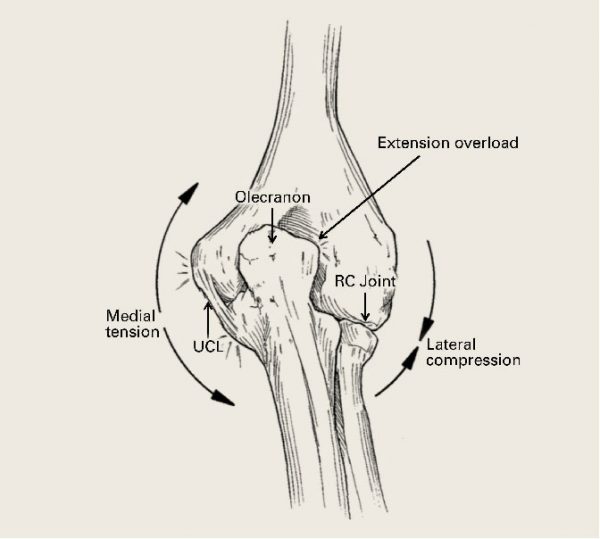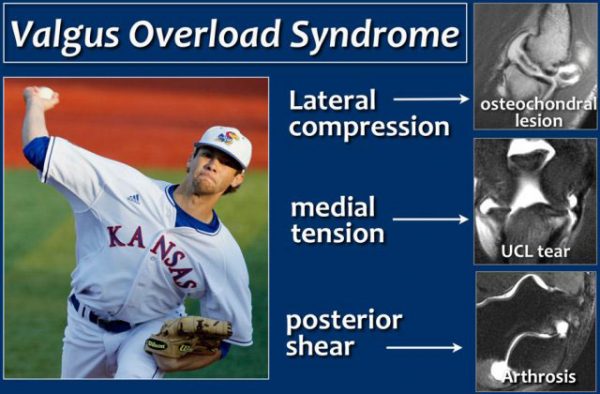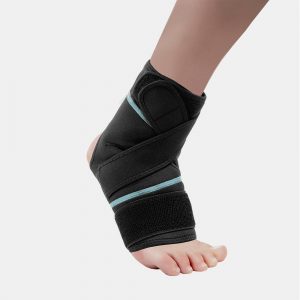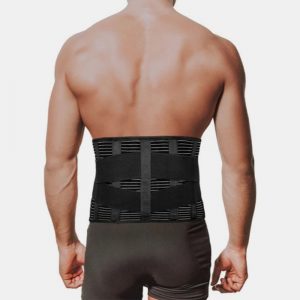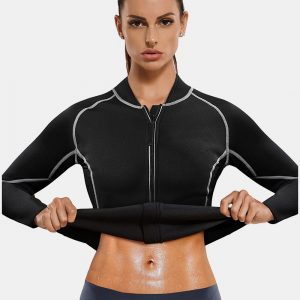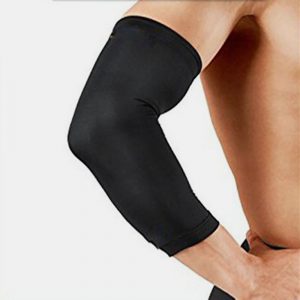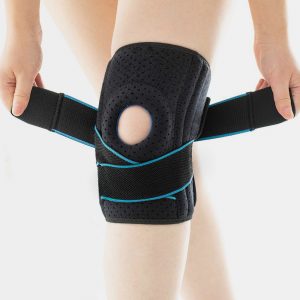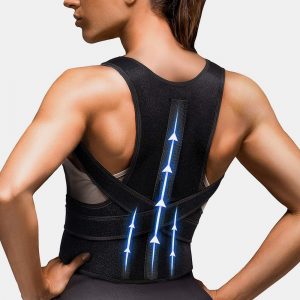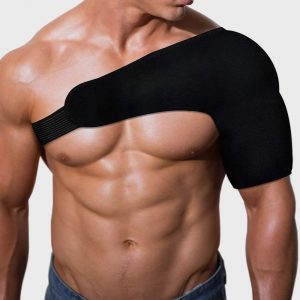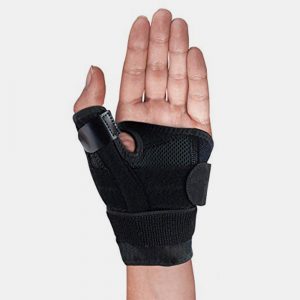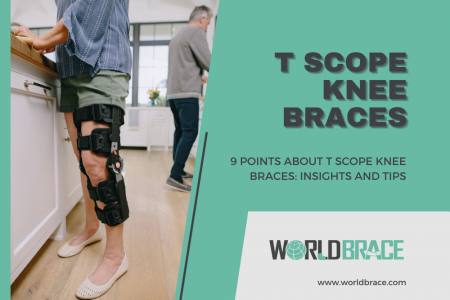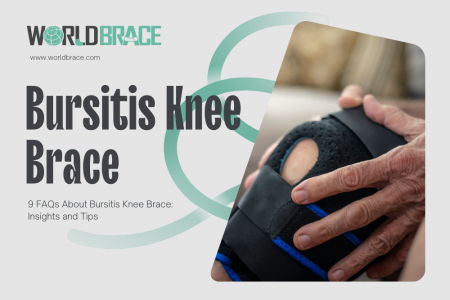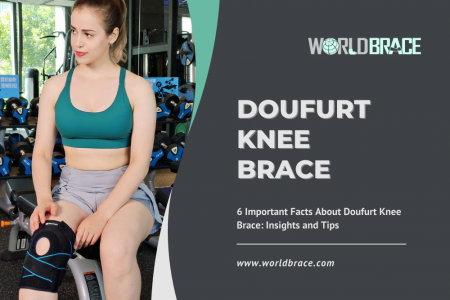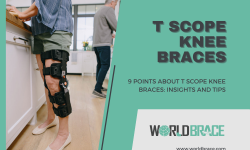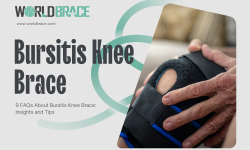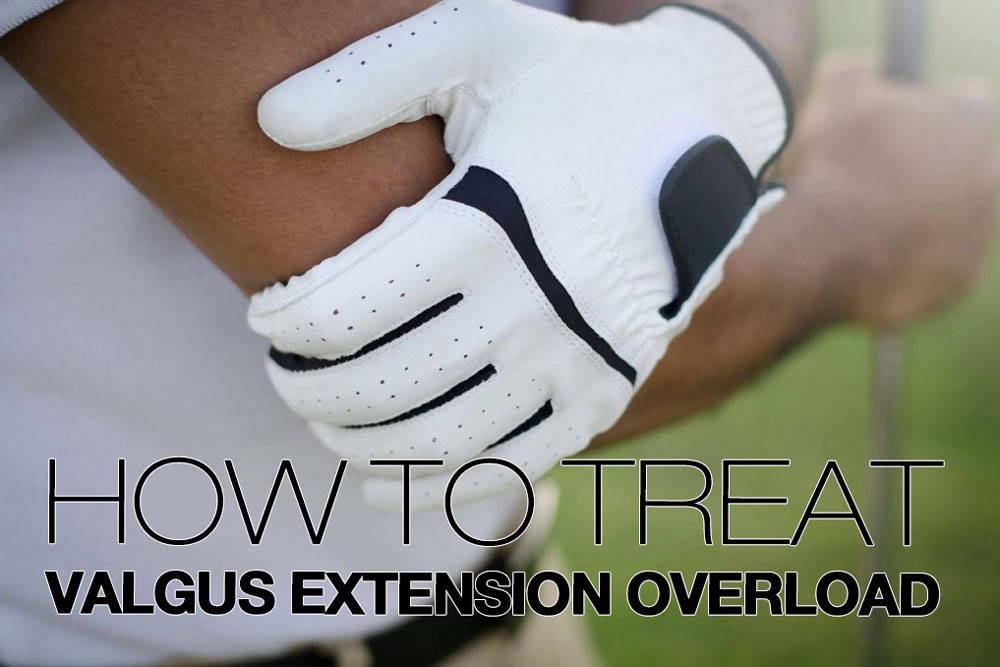
Table of Contents
WHAT IS VALGUS EXTENSION OVERLOAD?
The Humerus, the bone of the upper arm, joins with the pair of forearm bones, namely the ulna and radius, exactly where the elbow joint is found. The pointed and bony part of the elbow, named the olecranon, is the ulna’s upper end.
This joint has several muscles, nerves, ligaments, and tendons. This joint allows both the postures to strengthen and bend. Also, the arm can be rotated and twisted to a limit; hence it is both a hinge and pivot joint.
The thicker ligaments, also known as collateral ligaments, are on both the outer and inner sides of the elbow and grip the joint, preventing dislocation. Another ligament, the collateral ligament of the ulnar, is present on the inner side of the elbow and flows to the ulna from the inside of the Humerus.
The ulnar nerve passes from the elbow’s backside, commands hand muscles, and sends sensations to the ring and small finger. The posture of throwing makes the elbow undergo extreme strain. The olecranon and Humerus are pushed and overlap around each other.
Meanwhile, the UCL equilibrates the complete joint. Such excursion and constant repetition of such movement can collapse olecranon’s shielding cartilage causing the evolution of unusual overgrowth bone.This condition and scenario are named Valgus Extension Overload (VEO).
WHAT DOES VALGUS EXTENSION OVERLOAD FEEL LIKE?
VEO occurs because of repetitive high stress of throwing and overuse of the elbow muscles. It is very uncommon to have found such an injury for non-throwers. VEO occurs gingerly and is not an acute injury. Instead, it gradually spreads because of overuse of the elbow.
There is a test known as a valgus extension overload stress test which perhaps recreates the point of strains that occurs due to throwing on the elbow. During the test being performed on the patient, the expert will hold the arm and apply constant pressure on the side of the elbow. To reconfirm it, there are certainly more tests to ensure that the patient suffers from Valgus extension overload and not some other injury. Following are a few procedures;
- X-rays clarify the picture of stress damage, bone stimulus, and other abnormal growth.
- CT scans or computed tomography provide 3d pictures of the bone and can play a great source in expanding and briefing the bone stimulus or any other disorders found in
Valgus extension overload.
Magnetic resonance imaging or MRI scans. This test defines the extremity of the injury and can spot a stress breakage that cannot be captured in an x-ray picture.
VALGUS EXTENSION OVERLOAD SYNDROME
WHAT IS THE BEST TREATMENT FOR VALGUS EXTENSION OVERLOAD IN ELBOW?
As seen and observed, in most cases, the valgus extension overload can e treated through proper rest and physiotherapy. If it is not cured through physiotherapy sessions, then there are surgical treatments as well to eradicate the pain. Let’s elaborate both the treatments;
Non-surgical treatment
- Initially, the doctor advises proper bed rest for a specific period. If there are no signs of relief and progress, the physician then proceeds with further treatments instantly, which include;
- Physiotherapy exercises do wonders and restore strength and elasticity of the damaged muscles
- Medicines like naproxen and ibuprofen help in reducing pain and swelling
- Changes in postures
Surgical procedures and treatment
- For the treatment, various surgical procedures can terminate and stamp out the condition of valgus extension overload completely without bringing any change in the life of a professional. The surgical procedures will eventually.
- Through arthroscopically, the bone spurs over the olecranon, and any loose fragment on cartilage or bone inside the joint of the elbow can be extirpated. The procedure involves an arthroscopy placed in the reciprocal of the elbow for a clear view.
- UCL reconstruction is another procedure if the valgus extension overload is unsteady or ripped up. In this case, the whole ligament is re-enacted.
WHAT IS THE BEST ELBOW BRACE FOR VALGUS EXTENSION OVERLOAD?
The professional or an athlete, the sufferer of VEO, can resume their routine 6 to weeks after a successful surgery. As per recent research, the doctors are convinced that valgus extension overload should be treated through particular techniques and proper conditioning only if the physiotherapy sessions have failed and the injury is excruciating.
To help in that condition, Worldbrace presents you with the best variety of braces to help treat the injury. There is a massive variety of props available on the website. The link is provided here. There is a specially designed race for the elbow specifically to cure valgus extension overload. The braces available on world Braces are designed under the supervision of professional physicians. They are keeping the quality uncompromised.
The Valgus Extension Overload Test
faq
WHY DOES VALGUS STRESS TRAUMA TO THE ELBOW?
Valgus loses its stability due to injuries to the MCL, the medial collateral ligament, which occurs after trauma causes dislocated elbow.
WHAT DOES THE VALGUS EXTENSION OVERLOAD TEST?
It is performed to assess the integrity of the medial or ulnar collateral ligament.

